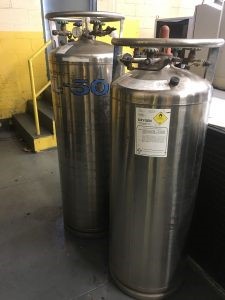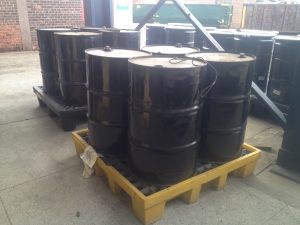
As the calendar year of 2019 comes to an end, the beginning of the Right-to-Know (RTK) season begins, with a filing deadline of March 1st, 2020.
Every year, the NYCDEP mandates businesses that use or store potentially dangerous substances report how much product they keep on site. Information is shared with the New York City Fire Department and the New York State Emergency Response Commission to aid first responders in the event of an emergency.

In order to prepare for the upcoming filling season, here are 10 things to keep in mind:
- The NYCDEP can inspect your facility at any time for compliance. If you’re not in compliance, or haven’t filed at all or on time, you may receive a violation.
- Properly maintain and keep current your facility’s Safety Data Sheets (SDSs) to reflect your facility’s current inventory. You will need to provide copies of your current SDSs to the NYCDEP annually, with your Right to Know Filing. Have your SDSs in a readily available format to your workers and/or emergency responders in case of an emergency (such as in a binder in a known location).
- Although it is not a specified NYCDEP requirement, all SDSs must follow the Hazard Communication Standard (HCS) (29 CFR 1910.1200(g)) requiring a consistent user-friendly 16 section format for OSHA compliance. Chemical manufacturers are required to provide them in this format in accord with OSHA.
- Remember that when you replace your old MSDS/SDS with new ones, you should keep the old ones for 30 years in accord with OSHA requirements.
- All tanks on the property should be labeled as per NYSDEC/local regulations, and all chemical containers, otherwise, should be labeled in accord with the Globally Harmonized System of Classification and Labeling of Chemicals (GHS) as per OSHA requirements for safety reasons and to avoid associated violations.
- Ensure all compressed gas cylinders are not only properly labeled, but stored as to OSHA/local requirements.
- Be aware that the amount of chemicals at your facility has a direct effect on the fee amount issued by the DEP.
- Evaluate all of the facility’s chemical inventory. If there are chemicals that are rarely used or haven’t been used in some time, then those chemicals should be phased out or discarded appropriately. Excess chemicals, especially those that aren’t in regular sight or maintained, may result in accidents or spills, which could be costly.
- Chemicals that contain an Extremely Hazardous Substance (EHS) may trigger the requirement for your facility to have a Risk Management Plan. If that chemical is not vital to your facility’s operations, you may want to consider phasing out its use or to properly dispose of it. 366 Risk Management Plans were created in New York City according to the 2018 Annual Report for Hazardous Materials Management.
- Remember to file, if you are required to, and to file and pay your required fees on time or you may face a violation and/or fine. First time violations can be up to $2,500. According to the 2018 Annual Report for Hazardous Materials Management in New York City issued by the NYCDEP,1 861 violations were issued throughout the 5 boroughs.

If you have any questions regarding your chemical inventory, DEP compliance, or RTK Tier II filing, check out our Right to Know Webpage and contact Walden Environmental Engineering at 516-586-0591.
1https://www.nyc.gov/html/dep/pdf/derta/dep_hazmat_annual_report_2018.pdf
